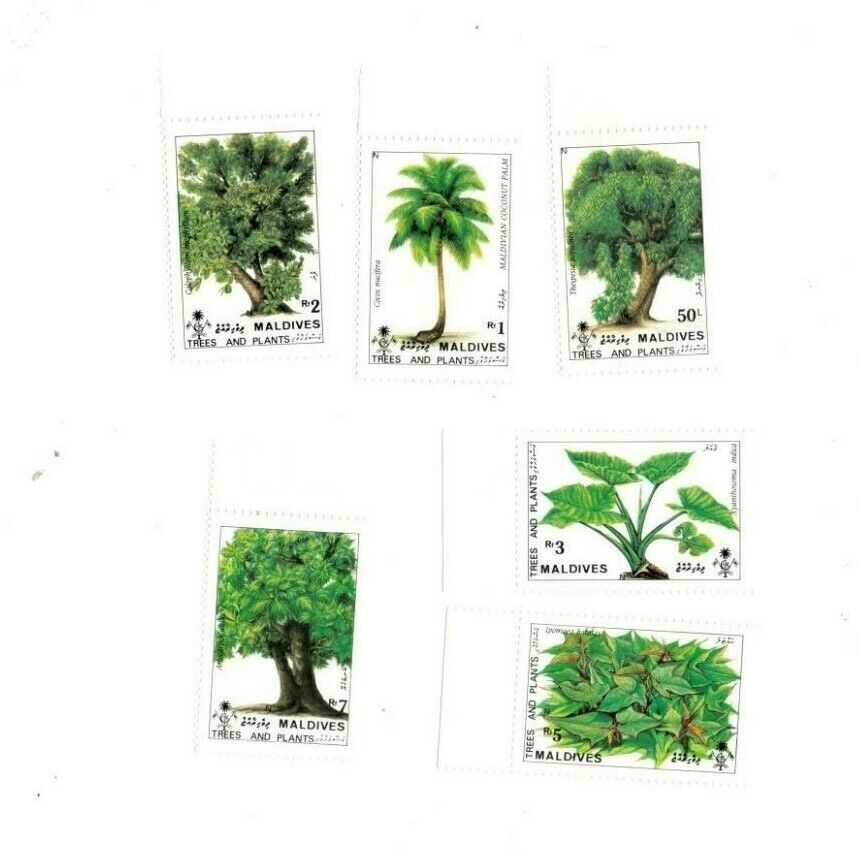-40%
Herbal Medicinal plants Brazil 2012 草药 tea Mi 4029-32 RHM C-3221-24 Phytotherapy
$ 4.21
- Description
- Size Guide
Description
ABOUT THE STAMPSThe stamps show four medical plants used as alternative medicine by traditional people from the Amazon. In the lower right corner we can notice the associated phytotherapic elements. The Andiroba is represented by its fruit and the medicinal nut oil; the Muirapuama, by its leaves, inner bark and the root tea; the Unha-de-gato shows the details of the leaves which attributed its name, and, as well the inner bark tea; the Copaíba is symbolized by the half of its fruit and the oil-resin extracted from the trunk. The names of the herbs are laser-printed on the stamps. The techniques used were watercolor painting and image scanning.
TECHNICAL DETAILS
Stamp issue n.12 Artist: Álvaro Nunes Print system: offset Sheet size: 24 stamps, 6 of each design Paper: gummed chalky paper Face value: 1st class rate for domestic commercial mail Issue: 300,000 stamps, 75,000 each Design area: 33mm x 33mm Stamp dimensions: 38 mm x 38mm Perforation: 11,5 x 11,5 Date of issue: August 5th, 2012 Place of issue: Belém/PA, Curitiba/PR Printing: Brazilian Mint
Brazilian Herbal Medicine - Medicinal plants - Traditional Knowledge
Through this issue, the Brazilian Post Office brings out four medicinal plants from the Amazon region, greatly widespread by popular knowledge: Andiroba, Muirapuama, Copaíba and Unha-de-Gato.
Andiroba
Andiroba is a large tree that grows in the Amazon Rainforest, mainly in floodplains and river banks, it may be found even on upland. It has a straight, cylindrical trunk and buttressed at the base. Its fruits are large with a globose capsule, containing from 8 to 16 seeds or kernels, which provide a bitter oil with medicinal reputation. The name andiroba is attributed to Carapa guianensis Aublet and Carapa procera DC. from Meliaceae’s family. The former is predominant in the Brazilian Amazon. The indigenous and Amazonian caboclos (local people) use Andiroba oil as repellent for purgative, tetanus, hepatitis, poisonous insect bites and parasites of the human body. In plaster or friction, whether mixed or not with other plants, it is good for bruises, muscle strains, sprains, sores and rheumatism. Syrup made with lemon and honey or simply mixed with honey, treats respiratory problems.It is used in soaps and ointments to treat skin disorders and it is also used in ordinary soaps. The crushed seeds resulting from oil extraction, is applied for the production of candles recognized as repellents for mosquitoes or gnats.
Muirapuama
The Muirapuama represents two native species from Amazon, belonging to Olacaceae’s family: Ptychopetalum olacoides Bentham (Brazil, French Guiana and Suriname) and Ptychopetalum uncinatum Anselmino (Brazil). They are trees that reach up to 15 m high, with straight and fenestrated trunk, shiny and bright green leaves, their roots are branched and have brighter color than the trunk. They are often found in upland forests. The two species, popularly known as Muirapuama, marapuama, muirantã, mirantã and pauhomem, are used in traditional medicine in Amazon. This plant is important in the traditional medicine of indigenous peoples from the region, whose bark and roots are recommended against sexual impotence and rheumatism. The aphrodisiac potions, found in local markets, are prepared by maceration of roots of young plants, alcohol-soaked, or associated with other plants with the same therapeutic reputation. Orally decoctions of the roots are indicated, in case of rheumatism, alcoholic maceration applied to the affected parts enhances the treatment. The decoction of the roots or bark is also applied to baths or to the friction on children’s legs that have been retarded from walking, because it is believed that this fosters their muscle. Muirapuama is still effective in the treatment of gastrointestinal and circulatory problems, moreover is recognized as an adaptogen or resistful plant, which is able to adapt the organism to adverse situations, such as stress and fatigue. Its action against nervous and memory disorders was confirmed, leading researchers to conclude that its use is probably beneficial to patients with Alzheimer's disease. The largest amount of muirapuama found in the Brazilian market comes from extractivism.
Copaíba
Copaíba is the name of about 20 species of the genus Copaifera (Leguminosae-Caesalpinioideae), occuring in Brazil. Among these, C. reticulata Ducke, C. multijuga Hayne, C. guianensis Desf., C. duckei Dwyer e C. martii Hayne are recurrent in the literature on medicinal plants in Amazon. They are large trees in general, with smooth bark, compound leaves, podike unilocular fruit with a pleasant and persistent flavour.They are found in upland forests and floodplains, also in sandy strips of land around lakes, streams, marshes and savannah areas. Its main therapeutic product is oil-resin extracted from the trunk. In traditional medicine, this plant is considered antiinflammatory and a healing for cuts, wounds and ulcers as well as antiseptic for the urinary tract, being also indicated in the treatment of broncho-respiratory diseases and skin diseases. For cramps and rheumatism, the oil is applied by friction on the affected parts. Once mixed with honey it is good for sore throats. The Amazon is a major supplier of oil in Brazil and abroad and the obtaining-process is solely from the extraction. The oil and the bark of copaibeira are sold throughout the region, in the local markets, fairs, and warehouses. Many community organizations use them fresh or as homemade formulas in potions and soaps, prepared and made available at a low cost or free. Yet pharmaceutical companies apply only the oil in simple formulations, capsules or mouthwash, lotions, shampoos, soaps and creams
Unha-de-gato
Unha-de-gato, also known in the Brazilian Amazon as unha-de-cigana, garra-de-gavião, cipó-de-tracuá and jupindá, these are the names given to two species of the genus Uncaria, of the Rubiaceae’s family: U. tomentosa (Willd. ex Roem. & Schult.) DC and U. guianensis (Aubl.) J. F. Gmelin. The first species was recorded for the western region (Acre, Amazonas, and Rondônia), inhabiting the primary forests slightly disturbed through the land temporarily flooded; the second occurs in the central area as well as in eastern, growing in secondary forests, meadows river banks and streams. Both species are shrubs climbers or vines, whose thorns characteristic, curved and pointy, justify the popular name in portughese which means Cat's claw. Unha-de-gato is applied by the amazon people to various health problems. In Peru, the inner bark is used to fight arthritis, cancer, stomach ulcers, viral diseases and inflammatory processes. In Brazil, the inner bark and leaves are marketed and recommended in the treatment of these ailments, like diarrhea, bleeding and the ones popularly called "women’s diseases." In the book of monographs on medicinal plants of the World Health Organization other uses of the inner bark of the species U. tomentosa are listed in the context of traditional medicine, such as the treatment of abscesses, asthma, fevers, urinary infections and worms. This species is included in the National list of Medicinal Plants for interest of SUS (RENISUS), approved by ANVISA. This list shall also inform the contraindications and side effects caused by doses higher than prescribed. Several herbal products (gel-cream, tablets and gelatin capsules) are produced currently being prescribed as painkillers, antiinflammatory in rheumatic processes (osteo-arthritis and rheumatoid arthritis) and against herpes.
Dr. Márlia Coelho-Ferreira Botanical Coordination of Emílio Goeldi Paraense Museum
Michel
BR 4029, 4030, 4031 e 4032
RHM
BR C-3221, 3222, 3223 e 3224
WADP Numbering System - WNS
BR040.12,
BR041.12,
BR042.12 e
BR043.12
Shipping Notes:
"Economic Send" sends an unregistered letter (no priority).
"Standard Send" is sending a registered letter with tracking number.
Delivery time on working days:
Minimum
Maximum
America
10
40
Europa
10
45
Oceania
16
50
Africa
18
50
Japan
12
45
Russia
20
60
Others
15
60
Visit my store
http://stores.ebay.com/selosricardo









